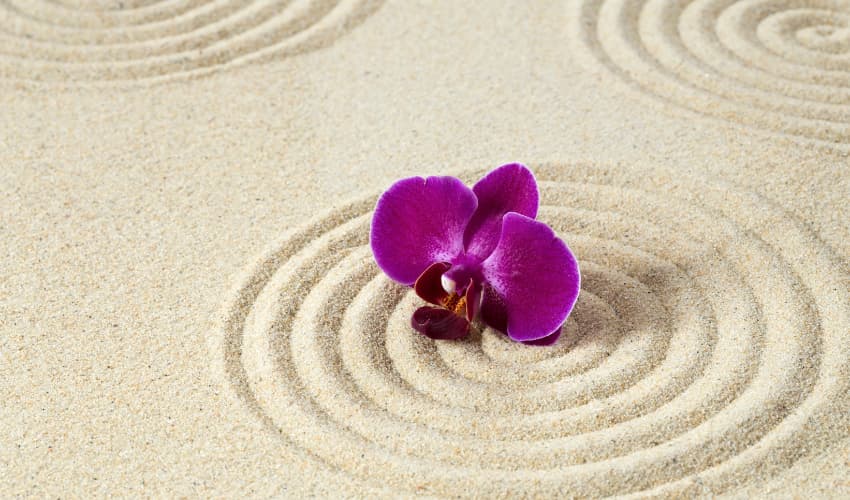Yoga Nidra, often described as yogic sleep, is a practice that guides the mind and body into a state of profound rest. Unlike ordinary sleep, it allows you to remain gently aware while moving into deep relaxation. With its roots in ancient yogic tradition, it has become a widely respected method of calming the nervous system and nurturing overall well-being.
By creating space for rest at both a physical and mental level, Yoga Nidra supports a sense of inner balance and clarity. It is a practice that complements modern life, offering a pause from daily demands and encouraging mindful living. Many find it helps restore natural energy, improve sleep patterns, and foster greater emotional ease.
One of the unique strengths of Yoga Nidra is its accessibility. It does not require physical movement or advanced skill, making it suitable for beginners as well as experienced practitioners. Whether practised as part of a wellness retreat or simply at home, it offers everyone the opportunity to experience deep rest and reconnect with themselves.
Origin
The practice of Yoga Nidra can be traced back to the wisdom of ancient India, where it was developed as part of the broader yogic tradition. Early teachings described it as a method of entering a state between wakefulness and sleep, where the body rests completely yet the mind remains aware. In this space, practitioners were able to quiet the senses, release tension, and touch a deeper state of consciousness.
Closely connected to meditation, Yoga Nidra was valued for its ability to bring stillness without the need for complex postures. It offered a path to relaxation that was both profound and accessible, often used by spiritual teachers as a preparation for higher practices of self-inquiry and awareness.
In the modern world, these timeless teachings have been gently adapted to suit contemporary lifestyles. Today, guided sessions are widely available, blending traditional methods with simple instructions that can be followed by anyone. Whether practised in a retreat setting, a studio, or at home, Yoga Nidra continues to offer a powerful antidote to stress and a means of restoring balance in daily life.
Teachings of Yoga Nidra
At the heart of Yoga Nidra is the experience of guided relaxation, where the practitioner is led step by step into a state of deep rest. Unlike drifting into sleep, the practice encourages conscious awareness throughout, allowing the mind to remain gently attentive while the body releases tension.
A typical session often unfolds in stages:
- Body scan – attention is moved systematically through different parts of the body, inviting complete release of muscular and mental strain.
- Breath awareness – gentle focus on natural breathing patterns helps calm the nervous system and settle the mind.
- Visualisation – simple imagery may be introduced to encourage clarity, creativity, or emotional balance.
- Intention (Sankalpa) – a short positive affirmation or heartfelt resolution is silently repeated, planting a seed for personal growth or inner change.
The philosophy behind Yoga Nidra rests on the idea that true rest comes not only from sleep but also from being aware in stillness. By remaining conscious while the body enters a deeply restful state, practitioners create the conditions for both physical restoration and mental clarity. This balance of relaxation and awareness is what makes Yoga Nidra such a distinctive and transformative practice.
Benefits of Practising Yoga Nidra
Regular practice of Yoga Nidra offers a wide range of benefits that extend into many areas of daily life. By inviting the body into deep rest while maintaining gentle awareness, it creates space for both physical and mental renewal.
- Reduced stress and anxiety – the guided relaxation lowers activity in the nervous system, easing tension and promoting calm.
- Better sleep and restfulness – many find that Yoga Nidra helps improve the quality of sleep, making it particularly supportive for those experiencing insomnia or restlessness.
- Enhanced emotional balance – the practice allows space to process emotions in a safe and restful state, leading to greater stability and resilience.
- Boost in creativity and mental clarity – with the mind cleared of stress and distraction, new ideas and fresh perspectives often arise naturally.
- Support for healing and recovery – deep rest encourages the body’s natural ability to restore itself, making Yoga Nidra a gentle companion for overall wellbeing.
These benefits can be felt after even a short session, yet they deepen with consistent practice. Over time, Yoga Nidra can become a valuable tool for maintaining balance, energy, and peace of mind in everyday life.
Beginner Techniques to Yoga Nidra
Starting Yoga Nidra is simple and requires very little preparation, making it ideal for beginners. The practice can be enjoyed almost anywhere, as long as the space is quiet and free from distractions.
Begin by creating a comfortable place to lie down, either on a yoga mat, a blanket, or even on your bed. Close your eyes, rest your arms by your sides, and allow your body to settle. Most beginners find it helpful to listen to a guided meditation, which gently leads them through each stage of the practice without the need to remember instructions.
Consistency is essential, as the benefits of Yoga Nidra are enhanced over time. Even a short daily practice can gradually bring deeper rest, improved sleep, and greater emotional balance. Unlike many other forms of yoga, there is no physical strain, so it can be practised as often as desired.
For those new to the experience, guided sessions are highly recommended. A skilled teacher or recorded guidance provides the structure and reassurance needed to ease into the practice. Over time, practitioners may become familiar with the flow and feel confident enough to explore it independently.
Yoga Nidra vs Other Form Yoga
Yoga Nidra differs from more familiar styles of yoga in both approach and purpose. While many yoga practices involve movement, postures, and controlled breathing, Yoga Nidra is experienced in complete stillness. It is less about physical discipline and more about entering a state of conscious rest.
The outcomes also vary. Traditional yoga postures develop strength, flexibility, and vitality, whereas Yoga Nidra focuses on relaxation, emotional balance, and mental clarity. Both can complement one another, offering a well-rounded path to wellbeing.
Below is a simple comparison highlighting the distinctions:
| Aspect | Yoga Nidra | Other Forms of Yoga |
|---|---|---|
| Practice Style | Lying down with guided meditation | Physical postures, movement, and breathing exercises |
| Focus | Deep relaxation and inner awareness | Strength, flexibility, stamina, and mindfulness |
| Physical Effort | Minimal, suitable for all levels | Varies from gentle to physically demanding |
| Primary Benefits | Improved sleep, stress relief, emotional balance | Improved fitness, posture, circulation, and energy |
Yoga Nidra can complement other practices, offering rest and renewal alongside the physical benefits of traditional yoga.
FAQs
Q: Is Yoga Nidra the same as sleep?
Not quite. Although it brings the body into a state of deep rest, Yoga Nidra is different from ordinary sleep. You remain gently aware throughout the practice, which allows both relaxation and conscious awareness to work together.
Q: How often should you practise Yoga Nidra?
Even a short session a few times a week can bring noticeable benefits. Many find that daily practice, even for just 20 minutes, helps create lasting improvements in sleep, stress levels, and overall balance.
Q: Can beginners try Yoga Nidra without prior yoga experience?
Yes, absolutely. No previous knowledge of yoga is required, as the practice involves lying down and following a guided meditation. It is suitable for all ages and abilities.
Q: Does Yoga Nidra require special equipment?
No equipment is needed beyond a comfortable place to lie down, such as a yoga mat, blanket, or bed. Some people also like to use a cushion under the head or knees for extra comfort.
Yoga Nidra in Wellness Retreat Setting
Within a retreat environment, Yoga Nidra becomes even more powerful. Surrounded by calm and supportive surroundings, guests can let go of everyday pressures and give themselves fully to the practice.
As part of a holistic retreat programme, Yoga Nidra complements yoga, meditation, and mindfulness sessions. Where active yoga strengthens the body and meditation steadies the mind, Yoga Nidra brings deep rest and restoration, creating a complete balance of practices.
Practising in a natural retreat setting also adds to the benefits. The quiet pace of life, fresh air, and connection to nature all support the sense of release and renewal that Yoga Nidra encourages. In this way, it becomes more than just a practice, but a way of returning to harmony with both oneself and the wider environment.
Aleenta Retreats in Thailand
Aleenta Retreat Chiang Mai offers a sanctuary for those wishing to rest, restore, and reconnect with themselves. Set in the foothills of Northern Thailand, the retreat combines luxury with an atmosphere designed for calm and reflection. Yoga Nidra is an integral part of the wellness programmes here, sitting alongside yoga, meditation, and healing therapies to create a complete approach to wellbeing. Guests are guided by experienced practitioners, allowing both newcomers and seasoned yogis to explore the practice with confidence.
The retreat’s philosophy extends beyond wellness sessions. Sustainability is woven into every aspect of daily life, from eco-friendly design and locally sourced ingredients to the elimination of single-use plastics. Combined with authentic healing traditions and highly personalised care, this creates an environment where transformation feels both natural and lasting.
Further south, Aleenta Phuket Phang Nga Resort & Spa continues the same philosophy in a coastal setting. Here, the wellness programmes flow seamlessly between the two resorts, offering guests consistency and depth in their wellness journey. Yoga Nidra is available alongside a wide range of restorative practices, from breathwork and meditation to yoga by the sea. The combination of ocean air, natural beauty, and holistic therapies makes Aleenta Phuket an inspiring complement to the Chiang Mai retreat, giving guests the choice of mountain calm or coastal renewal.
Related Articles
- Yoga Nidra for Deep Relaxation
- Yoga Retreats, Stretch Your Body and Mind
- Two Yoga Retreats to Reclaim Your Spirit in Thailand
- Thai Yoga Massage for Holistic Health & Wellness
- Transformative Yoga and Meditation Retreats at Wellness Hotels in Chiang Mai
Prefer an AI Summary?
Aleenta Retreat
Chiang Mai
Chiang Mai
189 Soi Ban Mai Lang Mo 18,
Suthep, Muang Chiang Mai District,
Chiang Mai 50200
T: +66 (0)52 090 333











